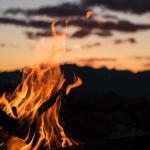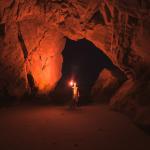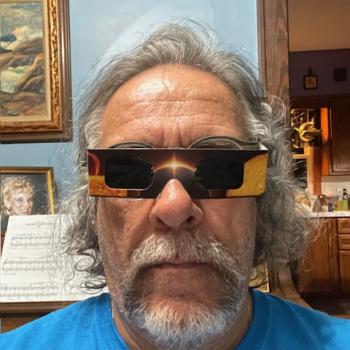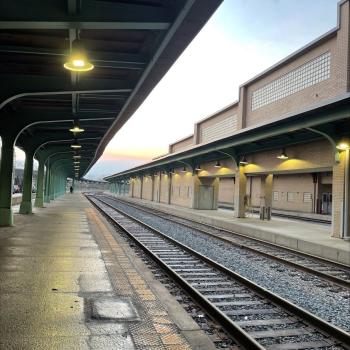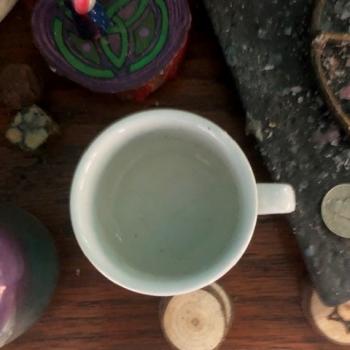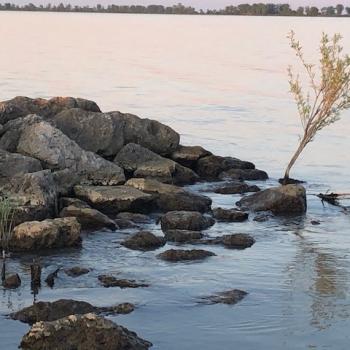Izzy Swanson with Feileacan Ministry and the Order of the Crows, asked me if I could direct her toward the source material for Gatekeeping gods in Celtic and Indo-European paganism. This article was my response.
About Invention in Celtic Reconstructionism(CR)
The reason why I open with this, is that all gatekeeper(geatóir) and doorkeeper(dóirseoireacht) practices, just like all other celtic pagan practices, are newly created this century by Neodruid recons and Celtic recons. So I’m going to talk briefly about invention in Celtic Reconstructionism.
We barely have any scrap of reconstructing pagan ritual to the liturgists level that it once was. In ADF we based our Core Order of Ritual on the well based assumptions that the very first Catholic Liturgies were in fact, pagan rites co-opted by the new faith.
We make our own whole-cloth paganism out of remnants of christianized practices, very few references to the druids and religions of the celts by second-hand and third-hand sources. We are left to look at the sister languages of the celts and the first hand accounts of those who practiced them. This is from Indo-European(IE) languages. The pre-christian religions belonging to speakers of the Indo-European family of languages have more than a few things in common.
We fill holes we perceive with Indo-European(IE) comparative mythology, archeology, linguistics, and magic.
In the CR Faq, a question titled, “If they didn’t write anything down, how do you know what they believed?” is answered thusly:
Folk patterns of pilgrimage to holy sites often include sacred springs, caves, and mountains that were holy before the arrival of Christianity. Well-dressing and the practice of tying strips of cloth on trees as an appeal for healing or luck is very likely a survival of pre-Christian Celtic belief. Although we don’t have enough to make a full and rounded system of Pagan belief from the fragments that survived, there is a great deal for us to work from. With the addition of evidence from archaeology and linguistic studies, and the help of comparative studies of religion and mythology as well as cultural anthropology and Indo-European studies, CR works to restore what was lost and bring things forward for new generations.
So to call our inventions a part of our own CR, we stay within these lines. Even still, the room we are afforded to fill holes we perceive is vast.
UPG enjoys the least priority in informing our practice. We go with cultural memory before we work with our own memory. We only feel our memory is trained well when it produces things that fit within the established canonical gnosis. Even still, invention within Celtic reconstructionism is a last resort.
Today, in a CR context we are visiting ADF’s gatekeeper practices to determine if historical precedence exists for a need for a gatekeeper and if the method of using an intermediary is ‘recognizable by our ancestors,’ a standard I generally set for inventions.
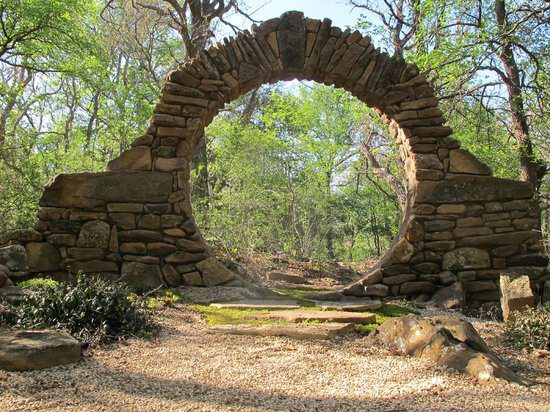
Gatekeepers the ADF Way
On the ADF website, Ian Corrigan’s gatekeeper article mentions:
In every I-E mythos this power is also embodied in a Deity, usually but not exclusively male. This Deity is associated with roads, travel, magic and
commerce. He is often a guide and mentor to heroes and may be the inventor or teacher of writing, poetry and art.
The way people use gatekeeper gods in ADF are that they hallow the way to the ancestors, usually a well, pit or cauldron. They then hallow the fire, pillar or tree, the way to the gods. And then a deity is summoned to open those ways and ward them.
This method has been created based on, but not co opted from, by ADF’s Founder’s experience with Afro-carribean magical training. It was recognized that we too had deities who act as boundary keepers.
This method is the result of neopagan druidism which has many non academic influences.
Gatekeepers the CR Way
As a member of ADF and the CR communities, and as the chief of an ADF grove who operates under strict CR methodologies, we find no conflict with any of the rules and requirements of the Core Order of Ritual or having an ADF identity. We’re just ADF CR, and so we do things differently. One example is that we don’t honor the Earth Mother. Planet Earth, as opposed to earthen soil, is made up of a complex of land goddesses. We don’t lump them into one goddess. To satisfy the Core Order, we only need worship the Land Mother which we are currently standing on. Nerthus was the goddess of earth soil not Planet Earth.
Another example is how we handle gatekeepers. We use two methods for this. We ask the tutelary goddess of the tribe to open the tribal border to the otherworld. We do this by asking them to dwell within the fire, and dwell within the water of the well, and allow us to open the gates while the guard the ways between otherworlds.
This way, we use indwelling gods, not summoned gods. We open the gods as ways. We see ourselves as cattle belonging to the gods, and we are penned in their portion of the otherworld when we enter the nemeton. As our gaudian, we ask them to open the ways to the otherworlds which for some folks in the ancient world, occured right outside their village barriers(Sjoestedt 874).
ADF and CR people often call otherworldly entrances and exists both thresholds and gates. Erynn Rowan Laurie does so amply in her book Ogam: Weaving Word Wisdom(Laurie).
The second way we make it more within the lines of a CR context is that we call upon specific porters(dóirseora) depending on the lore and the part of the otherworld and its dwellers, to which we want to make offering. If we convoke the Tuatha Dé, we envision approaching Tara’s Rath which its Sidhe doorkeepers. This is also within ADF’s guidelines because nowhere does it prevent you from calling upon two gatekeepers.
Indo-European Otherworlds
Indo-European mythology is full of gatekeepers, psychopomps, and sacrificers. There is one in every pantheon.
Hermodr went on for nine nights through dark dales and glens, going downward and northward, until he passed the gate of Hel. He found Baldr there on the high seat. (Puhvel 213). Before downward access to the underworld symbolism was popular, the realm of the dead among the Homerian tales is accessible via the northern myths upon the shore of Cape Tainaron. Norse Hel, cognate with Greek nerteros, was also located in the North(138). Odysseus’ necromancy occured on northern shores.
Hades is cognate with the Vedic Sam-Vid which means To Find [each other]. Yama had to traverse waterways to get to the meadowy pasture. ‘Makaron Nesoi’ which are of Hesiod’s work, and are the Blessed Isles, home of happy heroes and the honored dead. Proteus refers to this place when describing the “Elysian Field at the ends of the earth” in Homeric tales. ‘Elysion pedion’ can be reconstructed in PIE to *wlnutiyom pediyom ‘meadowy field’(139).
Psychopomps
Psychopomp is an ancient pagan greek word meaning ‘guide of souls’. Hermes, Mercury, Charon, Valkyries, the Badbs all guide either the slain or the dead to their final resting place. These gods are, while not keepers of gates, can keep way pretty well. In ADF you see many rites that work well using Psychopomps to open paths to the otherworld and to guard the journey. As guiders of souls, they will, but calling them gatekeepers is a stretch. Some are birds, the only gate involved in their travel is the cock of the walk.
Agni is seen as a psychopomp when in the context of being the consumer of funerary pyres. And so he guides the souls where they ought to go.
Lord of the Dead
The first primordial mortal to die generally is made to travers ‘waterways’ to get to ‘pasture lands’. Such is the case with Yama of Vedic myth who had to swim to get to the realm of the dead. Once there he had to homestead it and become its Sovereign. A similar thing happened with Donn who drowned and had to establish Teach Duinn. Makaron Nesoi, the greek blessed Isles are surrounded by water. Zeus Kata Khthonios was another name for Hades, who had similar circumstances occur surrounding homesteading the otherworld, which also has a waterway running through it(Styx) with tributaries(Pyriphlegethon, Cocytus). Hades does have gates which are guarded(kept), and so Cerberus is an Indo-European gatekeeper. We find the similar motif in Garmr, the guardian of Hel.
Guardians and Doorkeepers
Janus brought forth civilization. He is the god that looks forwards and backwards. He’s the god of openings and exits, and bridges heaven and earth.
Hermes is the god of roads and travel, trade and transport. He is the Lord of the greek crossroads. His vedic cognate is Pusan, which pegs Pan as an alternate variation on this IE root. Pan is all of Hermes excellence put into a deity that was like Apollo’s son, and was equally as peripheral to the Olympians. He was lord over the stillness of the day and the quick spooking of the cattle(132).
Gamal son of Figal and Camall son of Riagall are the porters of the Fort at Tara at the time of the coming of Lugh. They bar the door until he has a unique skill which will allow him entry.
In the Voluspa Heimdallr placed his son, Hljod meaning ‘hearing’ in the well under Yggdrasil. We know this because of a description of him being ‘under the evergreen holy tree’. As a result, he can hear grass growing, or that of wool. He guards that Rainbow bridge and can see for a hundred leagues without sleeping. It is his duty to sound the horn Gjallarhorn when Ragnarok breaks(212). In Janus case, he brought forth civilization, and in Heimdallr’s case, he was the first to speak at the Thing(106). Heimdallr might mean world tree, ‘heimr’ means habitat or world, and *dalthu and dallur means ‘fruit bearing tree’.
His mothers might be references to the nine waves of the ocean. In Celtic, particularly Welsh folklore, these waves are referred to as the sheep of the mermaid Morforwn, Gwenhudwy, ‘White Sorceress’. The ninth wave was called the ram(212). The story of how Heimdallr was born resembles how *Dyuas became Bhisma in the waters of the Ganges with 8 of his preceding brothers drowning before he. Heimdallr is the 9th wave. Bragi is the porter who bars Loki from the hall of the gods. The 9th wave in Celtic and Germanic paganism is the barrier between this realm and others.
In Culhwch and Olwen, the otherworldly castle of a giant with a great feasting hall with great pleasures enough for no one to have ever left the unnamed Gatekeeper is called a Porter. Port and portal being similar, and with the Irish cognate to this phenomenon in Lugh’s coming to the gatekeepers Gabal and Camal of the Rath at Tara before the second battle of Mag Tuired.
The Gate of Uffern has a keeper because in the Welsh lore, there are lit lamps with oil in them in the Book of Taliesin XXX.
Odysseus uses necromancy on the northern shores using the dead as intermediaries between this world and the otherworld. So we have a direct example of mediation of information with the dead. The dead act as gateways to the information by way of a pit and offerings made into it. Odysseus never enters the otherworld himself.
The Irish Otherworld(s)
There are many otherworldly lands in Irish lore, the Inish mBan, Mag Mell, Tir na nOc, the realm of Scáth, and more. Jenny Butler says the Irish otherworld is intertwined and just below this world as well as under the sea(Young 97). The inhabitants are neighbors who can enter this world through any threshold or fairy place, such as a sidhe mound(99). Therefore there isn’t but one gate to the otherworld. Nemetons in Ireland or in Europe ought to be established at holy sites. Nemetons elsewhere, become out holy sites and therefore, our fairy places.
The realm of the dead is part of the Otherworld, and though the fairy places have dead associated with them, fairy places and the realm of the dead are not the same place. They aren’t dissimilar, but they aren’t identical. There is a serious overlap between the lore of the dead and lore of the fairies, but the two lores are distinct as are the races.
The Irish otherworld can be found at the joining of rivers, shores, hilltops, and caves. At both guarded and unguarded thresholds. The cave of cats is called the ‘Gates of Hell’ in Rathcroghan because of the hauntings and paranormal activity associated with the site at Samhain(O’Brien). The Morrigan dwells within this cave and I would presume guards it. Therefore, she can be seen as a keeper of Otherworldly gates.
Guarded Thresholds
There is clearly the wild Otherworld, and the settled Otherworld. There are fields and forts, and forests, and ecosystems. This goes along with the IE dichotomy of innangard v Uttengard, Wild v Human. The gods are arranged as well. Divine wars integrate the wild earth gods with the gods of horses, smithing, war, and other human affairs.
So, otherworldly areas that are ordered and settled by gods of human affairs are going to be accessible by gates, roads, forts and doors, rather than streams, hills, and shores.
In Ritual and Magic
In Vedic Ritual, Agni is the god of the sacrifice, summoner of other gods. Agni sat in a square fire altar in public rites and a circular one in home rites. Agni’s Iranian cognate is Apam Napat. Napat relates to Neptune and Nechtan in Ireland. Apam Napat means offspring of the waters. Agni’s European linguistic cognates are ignis from Latin, ugnis from Lithuanians, and Old Slavic’s ogni.
Aed is seens as Agni’s counterpart. Aed is one of Dagda’s names and is seen as the fire of the druids. Brighid tends this fire as is common in IE firelore. Brighid can be used to tend the fire and call Dagda and the other gods forth.
In Vedism and in my reconstructed rites, we generally use Deux Derniers and Deux Premiers, or First Gods and Last Gods. In my Grove we call Ogma as the first god, call upon Bridgid to open the ways, and throughout the rite we call upon the three functions of gods and finally Brighid delivers the sacrifice. Then we call upon Brighid to open the ways to deliver the sacrifice and our prayers.
In germanic paganism, the spirit which guards the Hallows is the hallowwarden from heargward in Old English. Your gatekeeper can be as simple as the porter god of your own nemeton which opens ways to other worlds. Or you can have the hallowwarden as a person who keeps open the way to the gods and guards it.
Roman rites use a doorway. Pluto’s keys confirm the precedence for this. The locks which the keys operate are on Pluto’s Gate from which the dead cannot return.
In Germanic folklore, Millstones were seen as magical and were split apart and put in foundations and buried under gates.
Gate guardians occur on church doors, you can place them on your own, Stone Dwarves sit at the entrance to a shipping company called Het Scheepvaarthuis.
The Aelfric texts mentions witches performing necromancy at the crossroads and Pollington points out that folks not buried in the churchyard such as heathens, witches, and criminals were buried at the crossroads, which often demarks the edge of territories. These liminal spaces are arranged like the old heathen burial mounds which were erected at the edge of estates and hundreds (Pollington 53). They are mentioned in assembly with ‘esa’, the Aesir, and ‘ylfa’, or the Aelfar(germanic elven spirits) (51).
In Celtic Paganism, Manannan Mac Lir defines the hundreds of the other gods, he’s the god of the borders of all of the otherworld estates. As a result of this, you could use Hler in germanic rites and magic.
Mix this crossroads activity with the Indo-European tendency to have a god of Everything, and you undoubtedly will end up with a Lord of the Crossroads, simply adding that skill to an existing liminal god.


